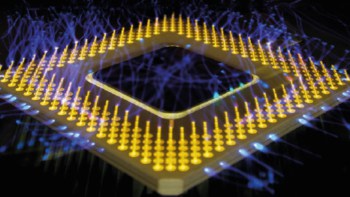The development of the integrated circuit in the 1950s raised the bar of what electronics could achieve, setting the path towards the ubiquitous electronic devices of today. For several decades the number of transistors per chip has doubled every two years, as devices become simultaneously smaller, cheaper and more functional. This persistent increase in chip density was first recognised by Gordon Moore and has since been termed “Moore’s Law”.
A key milestone in establishing integrated electronics as an integral part of day to day living was the founding of Intel by Moore and cofounder Robert Noyce on 18th July 1968. Fifty years on, as Moore’s Law seems to be reaching its limits, we speak to researchers in academia and industry about some of the developments on the horizon that they are most excited about.
Interviewees include specialists in bioelectronics, flexible electronics, energy harvesters and sensors, as well as the Managing Director of the Organic and Printed Electronics Association, a global network for flexible electronics.


